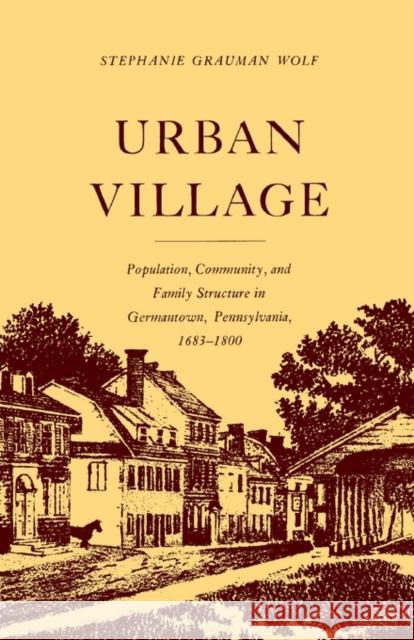Urban Village: Population, Community, and Family Structure in Germantown, Pennsylvania, 1683-1800 » książka
topmenu
Urban Village: Population, Community, and Family Structure in Germantown, Pennsylvania, 1683-1800
ISBN-13: 9780691005904 / Angielski / Miękka / 1980 / 374 str.
Urban Village: Population, Community, and Family Structure in Germantown, Pennsylvania, 1683-1800
ISBN-13: 9780691005904 / Angielski / Miękka / 1980 / 374 str.
cena 329,66
(netto: 313,96 VAT: 5%)
Najniższa cena z 30 dni: 323,55
(netto: 313,96 VAT: 5%)
Najniższa cena z 30 dni: 323,55
Termin realizacji zamówienia:
ok. 30 dni roboczych
Bez gwarancji dostawy przed świętami
ok. 30 dni roboczych
Bez gwarancji dostawy przed świętami
Darmowa dostawa!
Most studies of eighteenth-century community life in America have focused on New England, and in many respects the New England town has become a model for our understanding of communities throughout the United States during this period. In this study of a mid-Atlantic town, Stephanie Grauman Wolf describes a very different way of organizing society, indicating that the New England model may prove atypical. In addition, her analysis suggests the origins of twentieth-century social patterns in eighteenth-century life.
Germantown, Pennsylvania, was chosen for study because it was a small urban center characterized by an ethnically and religiously mixed population of high mobility. The author uses quantitative analysis and sample case study to examine all aspects of the community. She finds that heterogeneity and mobility had a marked effect on urban development--on landholding, occupation, life style, and related areas; community organization for the control of government and church affairs; and the structure and demographic development of the: family. Her work represents an important advance not only in our understanding of eighteenth-century American society, but also in the ways in which we investigate it.










